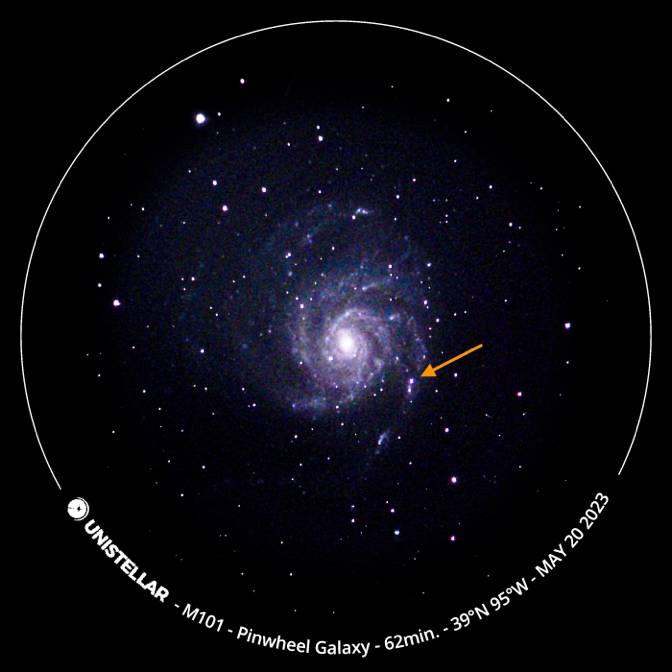In science, the more observations, the better the insights. And amateur astronomers are actually killing it when it comes to supernova (SN) 2023ixf. The event is in the Pinwheel galaxy, a spiral galaxy 21 million light-years from us, making it the closest of the last decade. It was discovered first by Japanese amateur astronomer Koichi Itagaki on May 19, and has since been observed by professional astronomers as well as a record-breaking number of citizen scientists, who continue to observe the object and collect data.
The work is part of the Cosmic Cataclysms program run by the SETI Institute and telescope company Unistellar. It has seen data collected by 123 citizen astronomers who have been observing the event since May, and they will continue to do so until August, when it is estimated the supernova will fade from view.
The astronomers used Unistellar’s eVscope, which is set up to share the data collected. In total, over 35 days, there were 252 observations collected from 115 telescopes. The data actually extended to the day before Itagaki discovered the supernova, and show the quick brightening of a star in its final throes. The supernova most likely ended in a neutron star.

Spot the supernova in this before and after of the Pinwheel galaxy, courtesy of observer and Unistellar College Astronomy Network member, Scott Kardel.
Image credit: Scott Kardel/SETI Institute/Unistellar
“It is really incredible what this citizen science network can do,” co-lead author Lauren Sgro said in a statement. “This was the closest supernova of the last decade, and observers took full advantage of the special occasion. They jumped on target as soon as possible and kept observing, which allowed us to witness the full potential of this program.”

The orange arrow points towards SN 2023ixf.
Image credit: Michael Cunningham/SETI Institute/Unistellar
Sgro and co-leader Tom Esposito are part of a team of SETI Institute researchers guided by Franck Marchis, a senior astronomer at the SETI Institute, and Chief Science Officer and co-founder at Unistellar. The Cosmic Cataclysms program aims to catch very energetic events in the “local” universe and use this extensive network of citizen scientists to conduct follow-up observations.
The observations are used to generate the light curve of events like SN 2023ixf, which can provide information on not just the event and its progenitors, but also the interstellar medium around the source.
The study is published in Research Notes of the American Astronomical Society.
Source Link: Closest Supernova Of The Last Decade Studied By Record-Breaking Number Of Citizen Scientists